MEDIUM BREEDS
Normal Dog Temp: Puppies, Adult , Senior Dogs

Understand The Topic

Normal Dog Temp: A dog’s body temperature is a key indicator of their overall health. Whether you have a playful puppy, an active adult dog, or a wise senior pup, knowing what constitutes a normal temperature is essential for detecting potential health issues early. This comprehensive guide covers everything you need to know about normal dog temperature, including age-specific considerations, how to take your dog’s temperature, and when to seek veterinary care.
For more information regarding 4 seasonal cxcercieses of all dog breeds recommended by the doctors and experts,you can visit our youtube channel:
What is a Normal Dog Temperature?
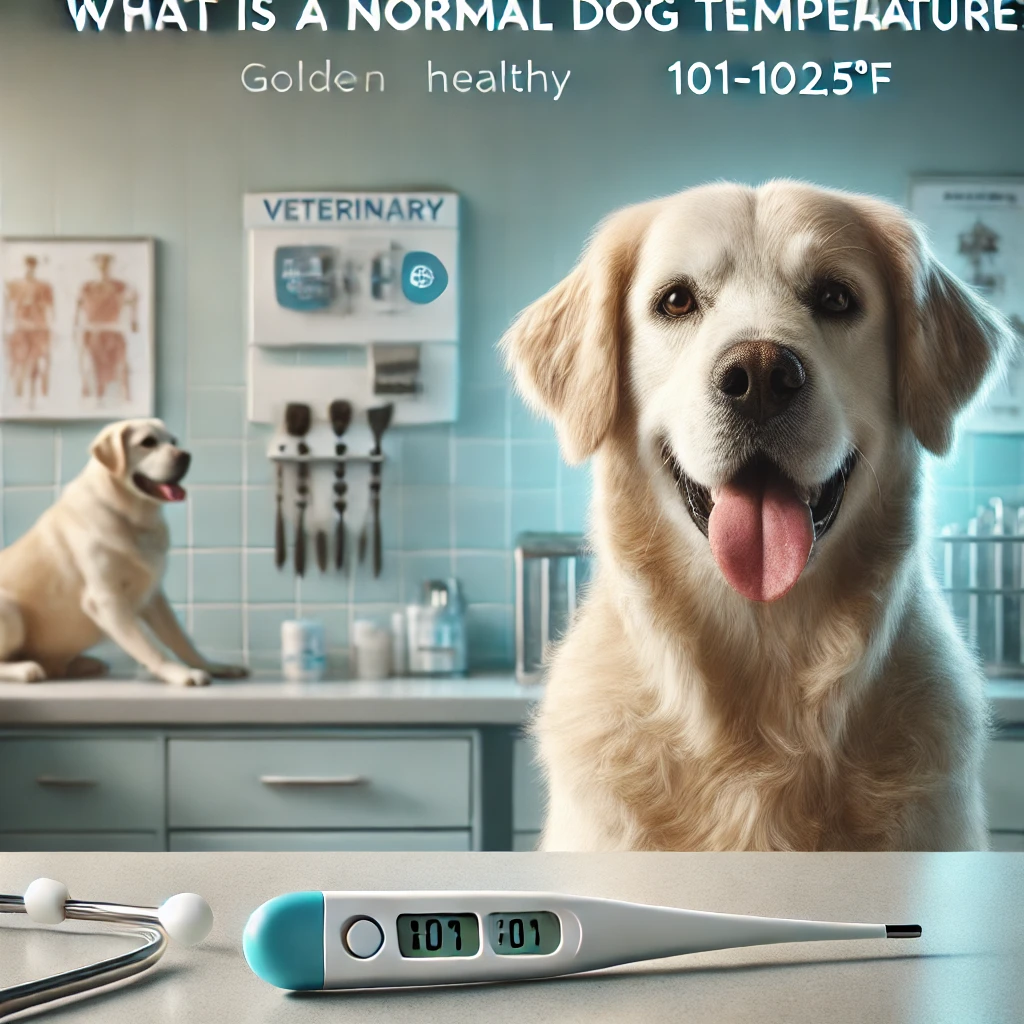
The normal body temperature for dogs ranges between (99.5°F and 102.5°F (37.5°C to 39.2°C). However, this range can vary slightly depending on the dog’s age, size, and activity level.
Normal Temperature by Age Group
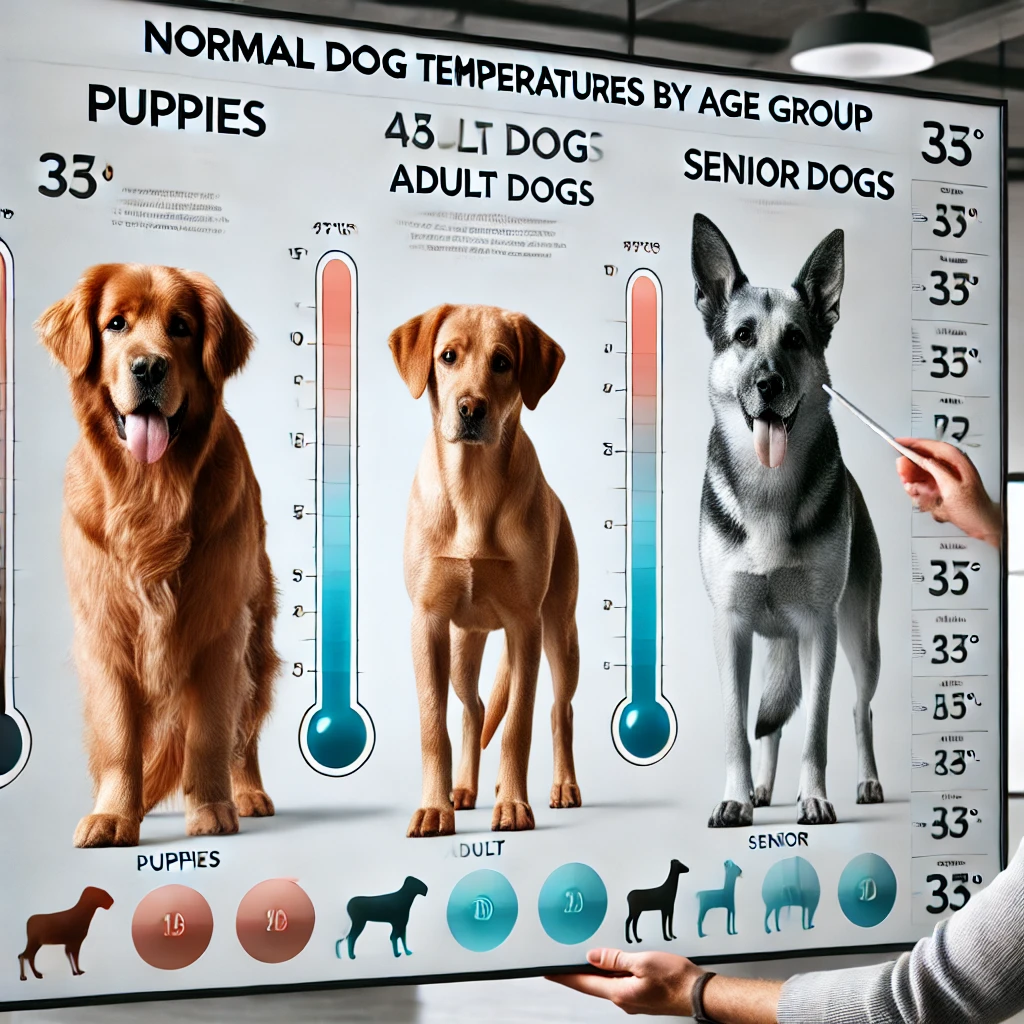
1. Puppies
- Normal Range: (99.5°F to 102.5°F (37.5°C to 39.2°C).
- Considerations: Puppies have less developed immune systems and may struggle to regulate their body temperature. Monitor them closely, especially in extreme weather.
2. Adult Dogs
- Normal Range: (99.5°F to 102.5°F (37.5°C to 39.2°C).
- Considerations: Active adult dogs may have slightly higher temperatures after exercise or play.
3. Senior Dogs
- Normal Range: (99.5°F to 102.5°F (37.5°C to 39.2°C).
- Considerations: Senior dogs may have a harder time regulating their temperature due to age-related health issues like arthritis or reduced metabolism.
How to Take Your Dog’s Temperature

The most accurate way to take a dog’s temperature is rectally. Here’s how:
- Gather Supplies:
-
- A digital thermometer (preferably pet-specific).
- Lubricant (e.g., petroleum jelly).
- Treats for positive reinforcement.
- Prepare Your Dog:
-
- Calm your dog and have someone assist you if needed.
- Lubricate the thermometer tip.
- Insert the Thermometer:
-
- Gently lift your dog’s tail and insert the thermometer about 1 inch into the rectum.
- Hold it in place until it beeps (usually 10-30 seconds).
- Reward Your Dog:
-
- Praise your dog and offer a treat to make the experience positive.
When to Be Concerned About Your Dog’s Temperature

Low Temperature (Hypothermia)
- Below 99°F (37.2°C): Mild hypothermia.
- Below 95°F (35°C): Severe hypothermia.
- Causes: Cold exposure, shock, or illness.
- Symptoms: Shivering, lethargy, weak pulse, and pale gums.
High Temperature (Fever or Hyperthermia)
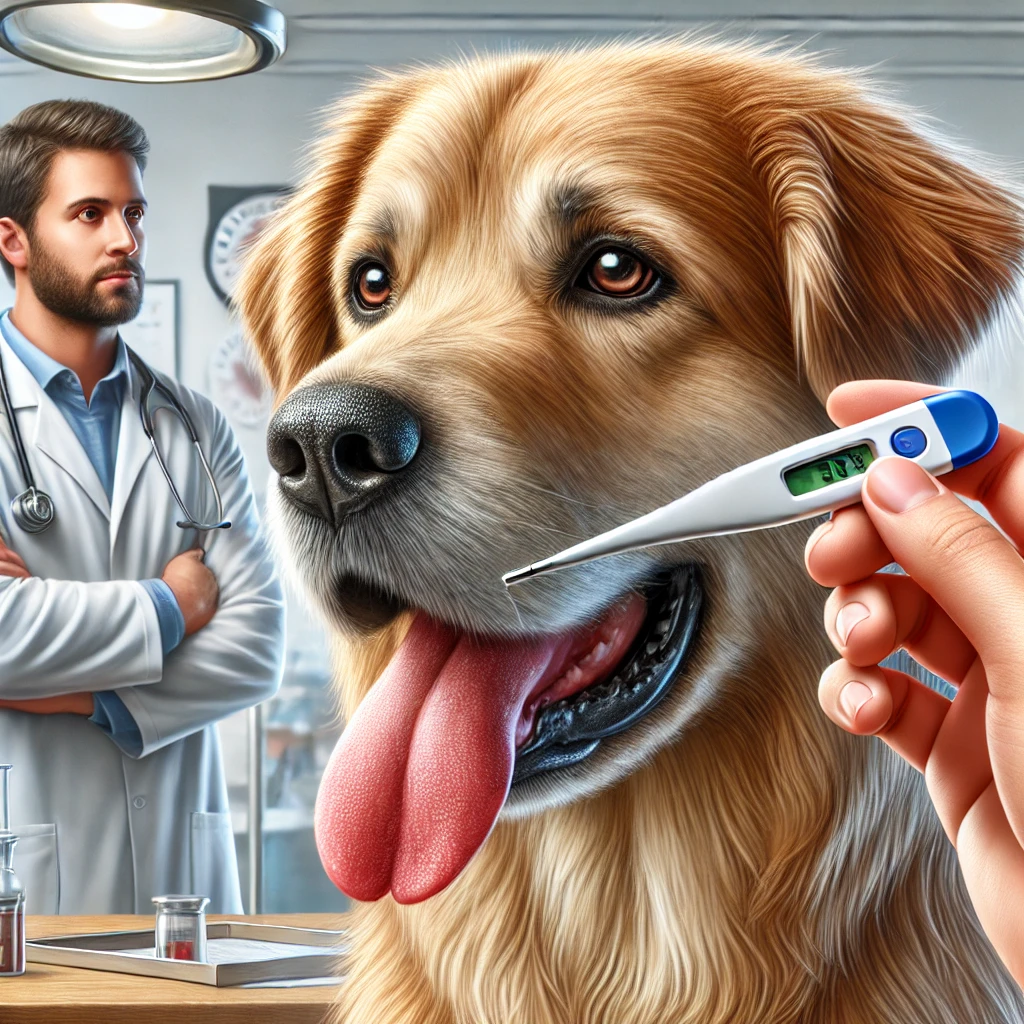
- Above 103°F (39.4°C): Mild fever.
- Above 106°F (41°C): Life-threatening hyperthermia.
- Causes: Infection, heatstroke, or inflammation.
- Symptoms: Panting, lethargy, vomiting, and red gums.
Age-Specific Considerations
Puppies
- Puppies are more vulnerable to temperature fluctuations due to their underdeveloped immune systems.
- Monitor their temperature regularly, especially after vaccinations or during illness.
Adult Dogs
- Adult dogs are generally more resilient but can still experience temperature changes due to stress, exercise, or illness.
- Keep an eye on their temperature during hot or cold weather.
Senior Dogs
- Senior dogs may have difficulty regulating their temperature due to age-related health issues.
- Regularly check their temperature and provide a comfortable environment.
How to Help Your Dog Maintain a Normal Temperature

1. Provide a Comfortable Environment
- Keep your home at a comfortable temperature (68°F to 75°F or 20°C to 24°C).
- Use cooling mats or heated beds as needed.
2. Monitor Outdoor Time
- Avoid extreme weather conditions.
- Provide shade and water in summer, and coats or boots in winter.
3. Regular Vet Check-Ups
- Routine vet visits help detect underlying health issues that could affect temperature regulation.
4. Hydration and Nutrition
- Ensure your dog has access to fresh water and a balanced diet.
When to Call the Vet

Contact your veterinarian if:
- Your dog’s temperature is below 99°F (37.2°C) or above 103°F (39.4°C).
- Your dog shows signs of hypothermia or hyperthermia.
- Your dog is lethargic, vomiting, or showing other concerning symptoms.
Closing Statement
Understanding your dog’s normal temperature is a vital part of responsible pet ownership. By monitoring their temperature and recognizing signs of abnormal fluctuations, you can ensure your puppy, adult dog, or senior pup stays healthy and comfortable. Regular vet check-ups, a comfortable environment, and proper care are key to maintaining your dog’s well-being.
(FAQs) About Normal Dog Temperature
Below are detailed answers to common questions about normal dog temperature, including how to measure it, age-specific considerations, and when to seek veterinary care.
1. What is a normal temperature for dogs?
The normal body temperature for dogs ranges between 99.5°F and 102.5°F (37.5°C to 39.2°C). This range applies to puppies, adult dogs, and senior dogs.
2. How do I take my dog’s temperature?
The most accurate method is rectally:
- Use a digital thermometer.
- Lubricate the tip with petroleum jelly.
- Gently insert it about 1 inch into the rectum.
- Hold it in place until it beeps (10-30 seconds).
3. Can I use an ear thermometer for my dog?
Ear thermometers are less accurate for dogs. A rectal thermometer is recommended for precise readings.
4. What temperature is too low for a dog?
A temperature below 99°F (37.2°C) is considered low and may indicate hypothermia. Severe hypothermia occurs below 95°F (35°C).
5. What temperature is too high for a dog?
A temperature above 103°F (39.4°C) is considered a fever. Temperatures above 106°F (41°C) are life-threatening and require immediate veterinary care.
6. Are puppies more sensitive to temperature changes?
Yes, puppies have underdeveloped immune systems and may struggle to regulate their body temperature. Monitor them closely, especially in extreme weather.
7. Do senior dogs have different temperature ranges?
Senior dogs have the same normal temperature range (99.5°F to 102.5°F), but they may have difficulty regulating their temperature due to age-related health issues.
8. What are the signs of hypothermia in dogs?
Signs include:
- Shivering
- Lethargy
- Weak pulse
- Pale gums
9. What are the signs of a fever in dogs?
Signs include:
- Panting
- Lethargy
- Vomiting
- Red or dry gums
10. Can stress affect my dog’s temperature?
Yes, stress or excitement can temporarily raise your dog’s temperature. Allow them to calm down before taking a reading.
11. How can I help my dog maintain a normal temperature?
- Provide a comfortable environment (68°F to 75°F or 20°C to 24°C).
- Avoid extreme weather conditions.
- Ensure proper hydration and nutrition.
12. When should I call the vet about my dog’s temperature?
Call your vet if:
- Your dog’s temperature is below 99°F (37.2°C) or above 103°F (39.4°C).
- Your dog shows signs of hypothermia or fever.
- Your dog is lethargic, vomiting, or showing other concerning symptoms.
13. Can exercise affect my dog’s temperature?
Yes, exercise can temporarily raise your dog’s temperature. Allow them to rest and cool down before taking a reading.
14. How often should I check my dog’s temperature?
Check your dog’s temperature if they show signs of illness or discomfort. Routine checks are not necessary unless recommended by your vet.
15. Are certain breeds more prone to temperature issues?
Yes, brachycephalic breeds (e.g., Bulldogs, Pugs) are more prone to overheating, while small or short-haired breeds are more sensitive to cold.
16. Can I use a human thermometer for my dog?
Yes, a digital human thermometer can be used for dogs, but it’s best to label it for pet use only to avoid cross-contamination.
17. What should I do if my dog has a fever?
- Keep them cool and hydrated.
- Contact your vet for further advice.
- Do not give human medications like ibuprofen or acetaminophen, as they are toxic to dogs.
18. What should I do if my dog has hypothermia?
- Bring them indoors and wrap them in warm blankets.
- Offer lukewarm water to drink.
- Contact your vet immediately.
19. Can diet affect my dog’s body temperature?
A balanced diet supports overall health, but specific foods do not directly affect body temperature. Ensure your dog stays hydrated, especially in hot weather.
20. How can I make taking my dog’s temperature less stressful?
- Use treats and positive reinforcement.
- Stay calm and speak soothingly.
- Practice handling your dog’s tail and hind area regularly.
MEDIUM BREEDS
Dog Canine Mental Fatigue: The Hidden Cause of Behavioral Issues

Understand The Topic
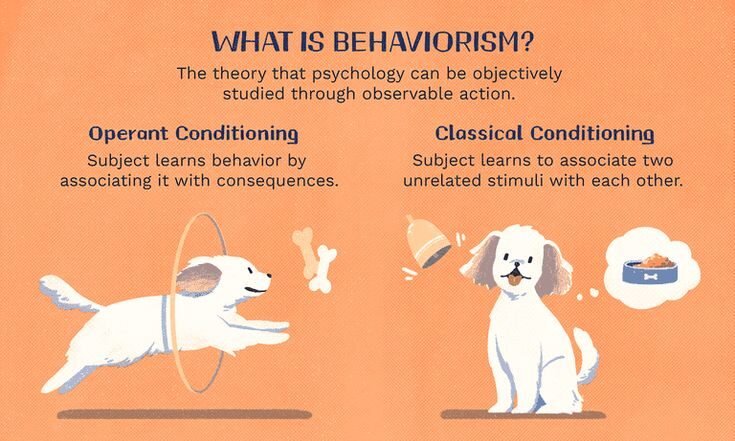
Dog Canine Mental Fatigue: Many dog owners believe that a tired dog is a well-behaved dog. While physical exercise is crucial, mental stimulation plays an equally important role in a dog’s overall well-being. Canine mental fatigue is a hidden issue that often leads to behavioral problems, anxiety, and even long-term health risks. Understanding and addressing this issue can significantly improve your dog’s quality of life.
For more information regarding 4 seasonal cxcercieses of all dog breeds recommended by the doctors and experts,you can visit our youtube channel:
What Is Canine Mental Fatigue?

Mental fatigue in dogs occurs when their brains are overworked, either from excessive stimulation or a lack of proper cognitive engagement. Just like humans, dogs need a balance between mental activity and rest. When this balance is disturbed, they can become stressed, irritable, and even depressed.
Signs of Mental Fatigue in Dogs
- Increased irritability or aggression
- Lack of interest in playtime or training
- Difficulty focusing or following commands
- Frequent yawning, licking, or stress signals
- Excessive sleeping or sudden hyperactivity
- Avoidance of interaction with owners or other pets
Causes of Mental Fatigue in Dogs

1. Overtraining Without Breaks
- Training is essential, but excessive or repetitive training sessions without breaks can exhaust a dog mentally. Their brain needs downtime to process and retain information.
2. Lack of Mental Stimulation
- Many dogs do not receive enough cognitive engagement, leading to boredom and frustration. Simple physical exercise is not enough; dogs need mental challenges to stay sharp.
3. Sensory Overload
- Loud noises, crowded environments, and excessive human interaction can cause stress. Certain dog breeds are more sensitive to sensory overload and require quiet spaces for relaxation.
4. Too Many Commands in One Session
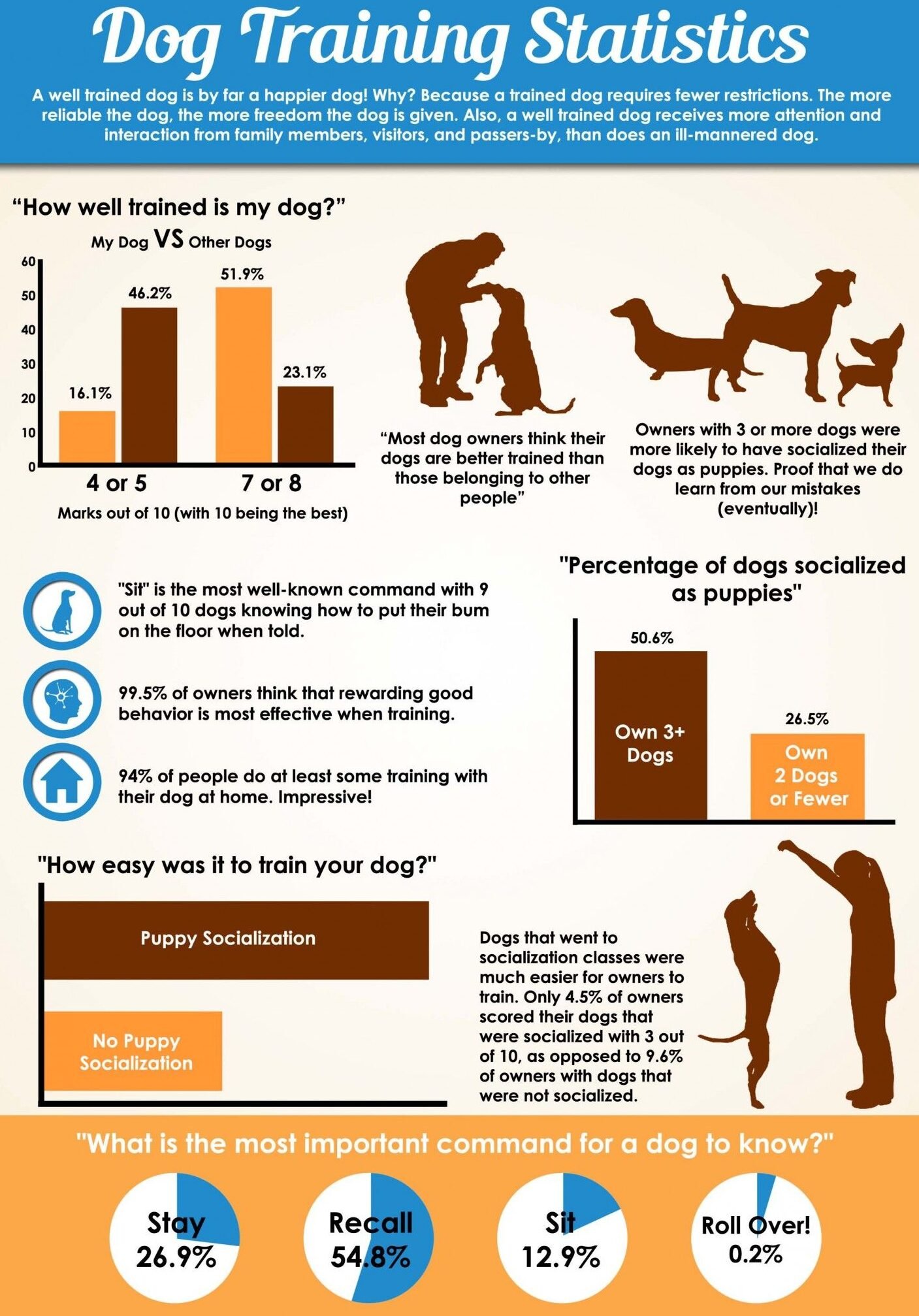
- Constantly introducing new tricks without giving a dog time to master previous ones can overwhelm them, leading to frustration and mental exhaustion.
5. Lack of Proper Sleep Schedule

- Dogs require 12-14 hours of sleep per day (puppies and older dogs may need even more). Irregular sleep patterns or disturbances can contribute to mental fatigue.
How to Prevent and Reduce Canine Mental Fatigue

1. Implement a Balanced Routine
- Mix physical exercise, mental stimulation, and rest periods to ensure your dog is not overworked or bored.
2. Provide Puzzle Toys and Interactive Games
- Invest in treat-dispensing puzzles, snuffle mats, and interactive toys that encourage problem-solving skills. These activities keep your dog engaged and mentally sharp.
3. Allow Free Exploration
- Taking a dog on a walk is not just about exercise—it’s an opportunity for them to use their senses. Allow them to sniff and explore their surroundings to engage their minds.
4. Keep Training Sessions Short and Reward-Based
- Limit training to 5–10 minutes per session and use positive reinforcement. Overloading a dog with new tricks can lead to frustration and fatigue.
5. Create a Quiet Resting Space
- Ensure your dog has a designated, quiet area in the home where they can relax and recover from stimulation.
6. Monitor and Adjust Their Social Interactions
- Not all dogs enjoy the same level of social interaction. Some may need more playtime, while others require calm and solitude to recharge. Pay attention to your dog’s individual needs.
7. Establish a Consistent Sleep Schedule
- Make sure your dog has a consistent bedtime routine and a comfortable sleeping environment to promote deep, restorative sleep.
Closing Statement

Mental fatigue is an often-overlooked issue that affects a dog’s behavior, mood, and overall health. Recognizing the signs and making simple adjustments can prevent stress-related problems and improve your dog’s happiness. By balancing mental and physical stimulation, you’ll have a healthier, more engaged, and well-behaved companion.
Frequently Asked Questions (FAQs)
1. How do I know if my dog is mentally tired or just sleepy?
- Mental fatigue often includes signs like irritability, lack of focus, or disinterest in activities. If your dog is simply sleepy, they will rest and recover quickly.
2. Can mental fatigue lead to serious health problems in dogs?
- Yes. Chronic stress from mental exhaustion can lead to anxiety disorders, weakened immunity, and even digestive issues.
3. How often should I give my dog mental exercises?
- Daily mental stimulation is important but should be balanced with rest. Short, engaging activities a few times a day work best.
4. What are the best mental exercises for dogs?
- Puzzle toys, interactive games, scent work, hide-and-seek, and short training sessions are great ways to keep your dog mentally sharp.
5. Can over-socialization cause mental fatigue in dogs?
- Yes, some dogs become mentally drained from too much interaction with people or other animals. Always monitor your dog’s behavior to adjust their social time accordingly.
MEDIUM BREEDS
Hepatitis in Dogs: Causes, Symptoms, Treatment, and Prevention

Understand The Topic

Hepatitis in dogs is a serious condition that affects the liver, leading to inflammation and potential organ damage. It can be caused by infections, toxins, or immune system disorders. Understanding the causes, symptoms, and treatment options can help dog owners protect their pets from this life-threatening disease.
For more information regarding 4 seasonal cxcercieses of all dog breeds recommended by the doctors and experts,you can visit our youtube channel:
What is Hepatitis in Dogs?

Hepatitis in dogs refers to liver inflammation caused by infectious agents, toxic substances, or immune-related conditions. The most common types include:
- Infectious Canine Hepatitis (ICH):
- Caused by Canine Adenovirus Type 1 (CAV-1), this highly contagious viral infection primarily affects young dogs.
- Chronic Hepatitis:
- A long-term condition that results from infections, autoimmune disorders, or prolonged exposure to toxins.
- Toxic Hepatitis:
- Caused by ingesting harmful substances like chemicals, medications, or poisonous plants.
Causes of Hepatitis in Dogs

Hepatitis in dogs can develop due to several factors, including:
- Viral infections – CAV-1 is the primary cause of infectious canine hepatitis.
- Bacterial infections – Certain bacterial infections can lead to liver inflammation.
- Toxins – Exposure to harmful substances such as pesticides, contaminated food, or certain medications can trigger toxic hepatitis.
- Autoimmune disorders – The immune system mistakenly attacks liver cells, causing chronic hepatitis.
- Genetic predisposition – Some breeds, such as Doberman Pinschers and Cocker Spaniels, are more prone to chronic hepatitis.
Hepatitis Causes by Dog Size and Most Affected Breeds

Certain dog sizes and breeds are more susceptible to hepatitis due to genetic predisposition, metabolic factors, or environmental exposure.
| Dog Size | Common Causes of Hepatitis
|
Most Affected Breeds and Why
|
|---|---|---|
| Small Breeds | Genetic liver issues, toxin sensitivity | Yorkshire Terrier, Maltese – Prone to liver shunts and congenital hepatic disorders |
| Medium Breeds | Autoimmune disorders, infections | Cocker Spaniel, Beagle – Higher risk of chronic hepatitis due to immune response issues |
| Large Breeds | Metabolic liver issues, chronic infections | Doberman Pinscher, Golden Retriever – Prone to chronic hepatitis and liver fibrosis |
| Giant Breeds | Dietary-related liver strain, toxin exposure | Great Dane, Labrador Retriever – Susceptible to toxin-induced hepatitis due to larger food intake |
Knowing these risks can help dog owners take preventive measures based on their dog’s size and breed.
Most Affected Countries and Their Efforts to Overcome Hepatitis in Dogs

Hepatitis in dogs is a global concern, but certain countries have reported higher infection rates due to climate, stray dog populations, and vaccination policies. Below are some of the most affected countries and how they are combating hepatitis:
| Country | Infection
Rate (%)
|
Measures Taken to Overcome Hepatitis
|
| USA | 8-10% | Increased vaccination programs, widespread use of liver supplements, strict pet health regulations |
| India | 12-15% | Focus on rabies and CAV-1 vaccinations, stray dog population control, environmental hygiene improvements |
| Brazil | 10-12% | Government-led vaccination drives, improved veterinary care access, awareness campaigns |
| UK | 6-8% | Regular veterinary screenings, high pet owner awareness, government-funded disease tracking |
| China | 9-11% | Encouraging pet vaccination programs, stricter pet import regulations, better food safety laws |
These countries have successfully managed hepatitis outbreaks through a combination of vaccinations, medications, liver supplements, and environmental control efforts.
Symptoms of Hepatitis in Dogs

The symptoms of hepatitis vary based on its severity and underlying cause. Common signs include:
- Fever and lethargy
- Loss of appetite
- Vomiting and diarrhea
- Yellowing of the skin, gums, and eyes (jaundice)
- Abdominal pain and swelling
- Increased thirst and urination
- Seizures in severe cases
- Cloudy or bluish eyes (specific to ICH)
- Early detection and prompt veterinary care can significantly improve a dog’s chances of recovery.
Diagnosis of Hepatitis in Dogs

A veterinarian will conduct a thorough examination and recommend diagnostic tests, such as:
- Blood tests – To check liver enzyme levels and overall health.
- Urinalysis – To assess kidney and liver function.
- Ultrasound or X-rays – To examine liver size and detect abnormalities.
- Liver biopsy – To determine the underlying cause of hepatitis.
Treatment Options for Hepatitis in Dogs

Treatment depends on the type and severity of hepatitis:
- Supportive care – Intravenous fluids, anti-nausea medications, and pain relief.
- Antiviral or antibiotic medications – If an infection is present.
- Liver supplements – To support liver function and repair damage.
- Dietary changes – Low-fat, high-protein diets help reduce liver strain.
- Hospitalization – In severe cases, dogs may require intensive care.
Relevant Liver Supplements for Different Dog Sizes

| Dog Size |
Recommended Supplements
|
| Small Breeds | Milk Thistle,
|
| Medium Breeds | S-Adenosylmethionine (SAM-e),
|
| Large Breeds | Denamarin,
|
| Giant Breeds | URSOLYX or. Ursodiol
|
Timely medical intervention increases the chances of recovery and prevents further liver damage.
Prevention of Hepatitis in Dogs

Preventive measures can help reduce the risk of hepatitis:
Vaccination – The CAV-1 vaccine effectively prevents infectious canine hepatitis.
Regular veterinary check-ups – Early detection of liver issues can improve outcomes.
Avoid toxins – Keep household chemicals, medications, and toxic foods out of reach.
Proper hygiene – Prevent bacterial infections by maintaining cleanliness.
Breed-specific screening – If your dog is genetically predisposed, regular monitoring is essential.
Closing Statement

For more expert insights on dog health, training, and care, visit DogsReader today!
Canine Hepatitis: Detailed FAQs

Hepatitis in dogs is a serious condition involving liver inflammation that can range from mild to life-threatening. Below is a comprehensive FAQ guide covering infectious canine hepatitis (ICH), toxic hepatitis, and other liver-related disorders in dogs.
1. What is Canine Hepatitis?
Definition:
An inflammatory liver condition categorized into two main types:
Infectious Canine Hepatitis (ICH) – Caused by canine adenovirus-1 (CAV-1)
Toxic/Non-Infectious Hepatitis – Liver damage from toxins, medications, or metabolic diseases
Key Fact:
ICH is not contagious to humans but spreads rapidly among unvaccinated dogs.
2. What Causes Hepatitis in Dogs?
A. Infectious Causes
Canine Adenovirus-1 (CAV-1) – Spread via urine, feces, or saliva of infected dogs
Leptospirosis (Bacterial infection from contaminated water)
B. Non-Infectious Causes
Toxins (Xylitol, pesticides, moldy food, certain medications)
Autoimmune disease
Chronic conditions (Diabetes, Cushing’s disease)
Trauma or cancer
3. What Are the Symptoms of Hepatitis in Dogs?
| Early Signs |
Advanced Symptoms
|
|---|---|
Loss of appetite |
Jaundice (yellow gums/eyes) |
Lethargy |
Abdominal swelling |
Mild fever |
Blood in vomit/stool |
Increased thirst |
Seizures or coma (severe cases) |
Note: Some dogs show no symptoms until liver damage is severe.
4. How is Hepatitis Diagnosed?
Blood tests (High liver enzymes, bilirubin)
Ultrasound/X-rays – Check liver size & abnormalities
Biopsy – Confirms inflammation or cancer
PCR test – Detects CAV-1 virus
5. How is Canine Hepatitis Treated?

A. Infectious Hepatitis (CAV-1)
Supportive care (IV fluids, anti-nausea meds)
Antibiotics (For secondary infections)
Liver protectants (SAMe, milk thistle)
B. Toxic Hepatitis
Detoxification (Activated charcoal if toxin ingestion is recent)
Hospitalization for severe cases
Prognosis:
Mild cases often recover with treatment.
Severe liver damage may be fatal or require lifelong management.
6. Is There a Vaccine for Canine Hepatitis?

✅ Yes! The DA2PP vaccine (which includes CAV-2, cross-protective against CAV-1) is core for puppies and adult dogs.
Vaccine Schedule:
Puppies:
Every 3–4 weeks until 16 weeks old
Adults:
Booster every 1–3 years
Note: CAV-1 itself is rarely used in vaccines due to side effects (e.g., “blue eye” reaction).
7. How Can I Prevent Hepatitis in My Dog?
Vaccinate regularly (DA2PP)
Avoid toxins (Keep xylitol, grapes, antifreeze away)
Limit exposure to infected dogs or contaminated areas
Feed a balanced diet (Avoid fatty table scraps)
8. Can Dogs Recover Fully from Hepatitis?

Mild cases: Often recover with no lasting damage.
Chronic hepatitis: May require lifelong medication (e.g., immunosuppressants, ursodiol).
Severe cirrhosis: Liver failure may be fatal or require euthanasia.
Follow-up: Regular bloodwork monitors liver health post-recovery.
9. Is Canine Hepatitis Contagious to Other Pets or Humans?
Dogs: CAV-1 spreads via bodily fluids (highly contagious in kennels).
Cats/Other Pets: Not affected by CAV-1.
Humans: No risk—CAV-1 is species-specific.
Exception: Leptospirosis (a bacterial cause of hepatitis) can infect humans.
10. What Should I Feed a Dog with Hepatitis?

Vet-Approved Diet Tips:
Low copper (Avoid liver, shellfish)
High-quality protein (Eggs, lean chicken)
Hepatoprotective supplements (Vitamin E, SAMe)
Avoid fatty foods
Prescription diets (Hill’s l/d, Royal Canin Hepatic) are often recommended.
Yellow gums/eyes
Black, tarry stools
Sudden collapse
MEDIUM BREEDS
Common Behavioral Issues in Dogs:Understanding and Addressing

Solutions For Managing Them

Common Behavioral Issues in Dogs: Dogs are intelligent and loving companions, but like humans, they can develop behavioral issues. Recognizing and addressing these problems early can make a significant difference in your dog’s well-being and your relationship with them. This article explores common behavioral issues in dogs and provides practical solutions for managing them.
For more information regarding 4 seasonal cxcercieses of all dog breeds recommended by the doctors and experts,you can visit our youtube channel:
1. Aggression
Aggression in dogs can manifest in various ways, such as growling, snapping, or biting. It can stem from fear, dominance, territorial instincts, or frustration.
Causes:
- Fear or anxiety
- Lack of socialization
- Territorial behavior
- Past trauma or abuse
Solutions:
- Gradual socialization with people and other animals
- Positive reinforcement training
- Consulting a professional dog trainer or behaviorist
- Ensuring adequate physical and mental stimulation
2. Excessive Barking

Dogs bark to communicate, but excessive barking can become a nuisance.
Causes:
- Boredom or loneliness
- Attention-seeking behavior
- Alarm or territorial instincts
- Anxiety or fear
Solutions:
- Provide regular exercise and mental stimulation
- Train the “quiet” command using positive reinforcement
- Avoid rewarding unnecessary barking
- Address any underlying anxiety or fear issues
3. Separation Anxiety

Separation anxiety occurs when a dog becomes overly distressed when left alone, leading to destructive behaviors such as chewing, howling, and house soiling.
Causes:
- Over-attachment to the owner
- Sudden changes in routine
- Past traumatic experiences
Solutions:
- Gradually increasing alone time to build independence
- Providing interactive toys or treat-dispensing puzzles
- Using calming techniques such as soothing music
- Seeking professional help if symptoms persist
4. Chewing and Destructive Behavior

Dogs explore the world with their mouths, but destructive chewing can be frustrating.
Causes:
- Teething (in puppies)
- Boredom or lack of exercise
- Anxiety or stress
Solutions:
- Provide appropriate chew toys
- Increase daily physical activity
- Use deterrent sprays on forbidden objects
- Avoid punishing, and redirect to appropriate behavior
5. Jumping on People

Jumping is often a sign of excitement, but it can be problematic, especially with large dogs.
Causes:
- Seeking attention
- Excitement and lack of impulse control
- Reinforcement of the behavior (owners encouraging jumping)
Solutions:
- Ignore the behavior and reward calm greetings
- Teach an alternative behavior such as “sit”
- Use consistent training with all family members
6. Leash Pulling

Dogs that pull on the leash make walks challenging and unpleasant.
Causes:
- Overexcitement
- Lack of leash training
- Desire to explore surroundings quickly
Solutions:
- Use a front-clip harness to discourage pulling
- Train using the “heel” command
- Stop walking when pulling occurs and resume only when calm
- Reinforce good behavior with treats and praise
7. Digging

Digging is a natural instinct but can become destructive when it affects gardens and yards.
Causes:
- Boredom or excess energy
- Hunting instinct
- Seeking comfort in hot or cold weather
Solutions:
- Provide ample exercise and mental engagement
- Designate a specific digging area with loose soil or sand
- Distract with toys and activities
- Address any rodent or pest issues in the yard
8. Begging for Food

While it may seem harmless, feeding dogs from the table can reinforce bad habits.
Causes:
- Past reinforcement of begging behavior
- Hunger or interest in human food
- Lack of discipline during meal times
Solutions:
- Avoid giving food from the table
- Establish a designated feeding schedule
- Train with the “leave it” command
- Provide healthy dog treats as alternatives
9. Fearfulness and Phobias

Some dogs may display excessive fear or phobias toward certain objects, noises, or situations.
Causes:
- Traumatic past experiences
- Lack of early socialization
- Genetic predisposition
Solutions:
- Gradual desensitization and counterconditioning
- Avoid forcing the dog into fearful situations
- Provide reassurance and positive reinforcement
- Consult a behaviorist for severe phobias
10. Resource Guarding

Resource guarding occurs when a dog aggressively protects food, toys, or other valued items.
Causes:
- Instinctual survival behavior
- Fear of losing valued possessions
- Inconsistent training
Solutions:
- Teach “drop it” and “leave it” commands
- Trade valued items for treats to build trust
- Avoid punishing guarding behavior, as it can escalate aggression
- Seek professional help for severe cases
Frequently Asked Questions (FAQs)
1. How can I tell if my dog’s behavior is normal or a problem?
If your dog’s behavior is excessive, destructive, or causing distress to you or them, it is likely a problem. Monitoring patterns and frequency can help determine whether intervention is needed.
2. Can all behavioral issues be fixed?
Most behavioral problems can be managed or corrected with patience, training, and consistency. However, some cases may require professional help from trainers or veterinarians.
3. When should I seek professional help for my dog’s behavior?
If your dog’s behavior poses a risk to themselves or others, persists despite training efforts, or worsens over time, consulting a veterinarian or behaviorist is advisable.
4. How long does it take to correct behavioral issues?
The duration varies depending on the severity of the issue, consistency in training, and the individual dog. Some problems improve within weeks, while others may take months of reinforcement.
5. Are certain breeds more prone to behavioral issues?
Some breeds have tendencies toward specific behaviors due to genetics, but environment, training, and socialization play significant roles in shaping a dog’s behavior.
Closing Statement
Understanding and addressing behavioral issues in dogs requires patience, consistency, and a positive approach. Whether through training, socialization, or professional guidance, dog owners can help their pets become well-adjusted and happy companions.
For more expert dog care tips, training guides, and breed-specific information, visit DogsReader at www.dogsreaders.com and follow us on Facebook and Instagram!
-

 SMALL DOG BREEDS4 months ago
SMALL DOG BREEDS4 months agoMerle Chihuahua: A Comprehensive Guide
-

 SMALL DOG BREEDS4 months ago
SMALL DOG BREEDS4 months agoMaltese: A Beloved Companion
-

 Large Breeds4 months ago
Large Breeds4 months agoSamoyeds Hypoallergenic: Closer Look at the Breed
-

 SMALL DOG BREEDS4 months ago
SMALL DOG BREEDS4 months agoMerle Pomeranian: A Adorable Companion
-

 Large Breeds4 months ago
Large Breeds4 months agoStandard Poodle Weight: Country Wise
-

 SMALL DOG BREEDS4 months ago
SMALL DOG BREEDS4 months agoYorkshire Terrier: a Big Personality
-

 MEDIUM BREEDS4 months ago
MEDIUM BREEDS4 months agoAmerican Water Spaniel Colors Chocolate In Crcols:
-

 Terrier Breeds3 months ago
Terrier Breeds3 months agoDog Breeds: by Country & Category


































